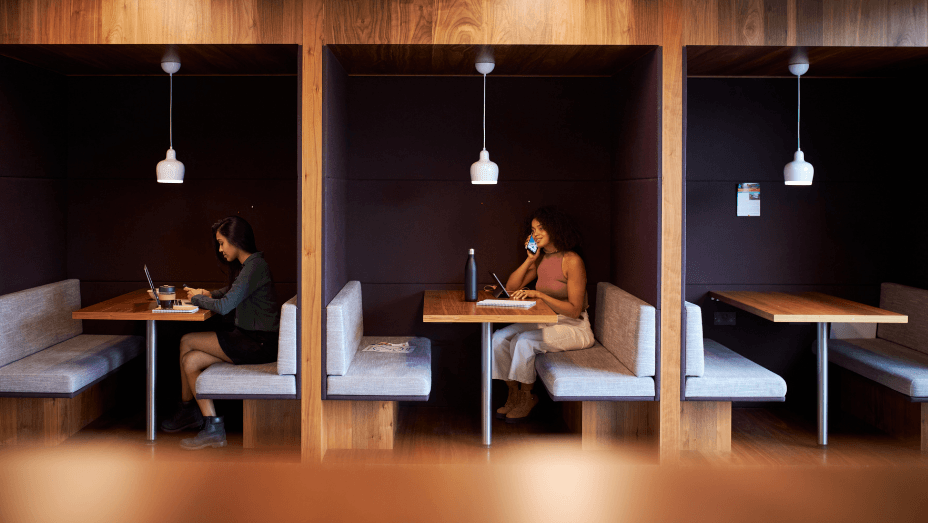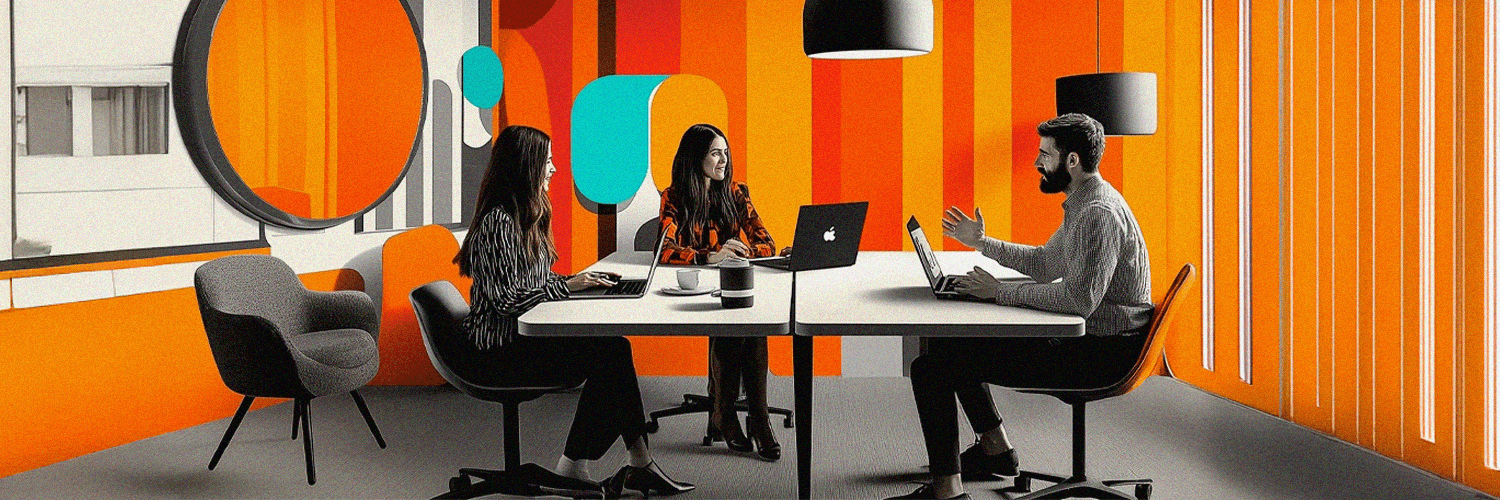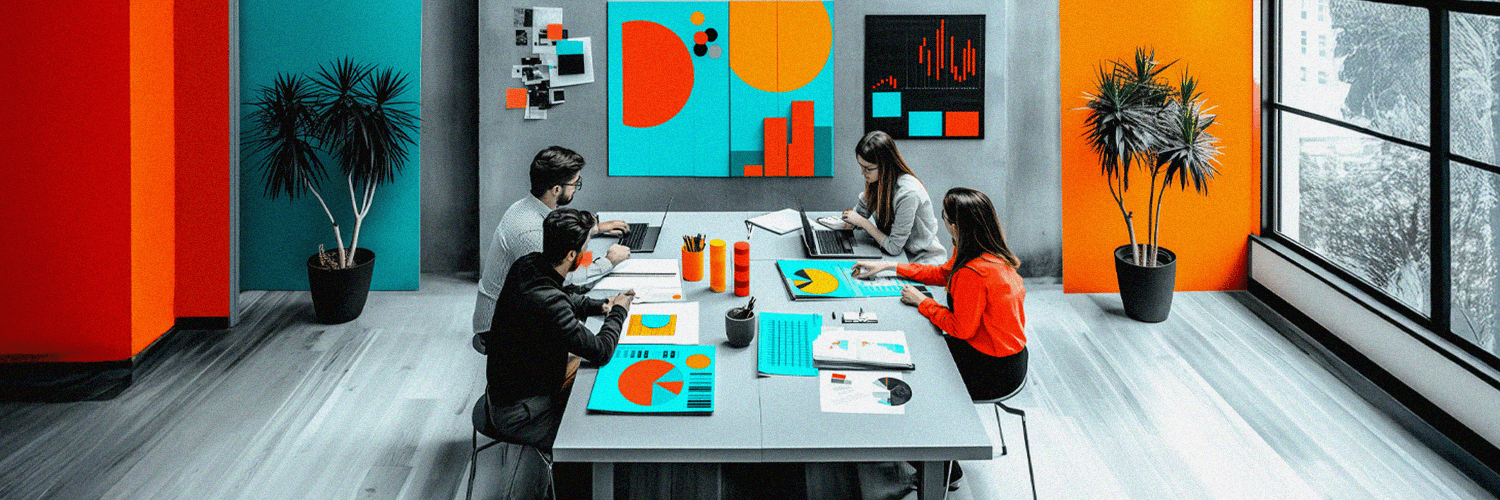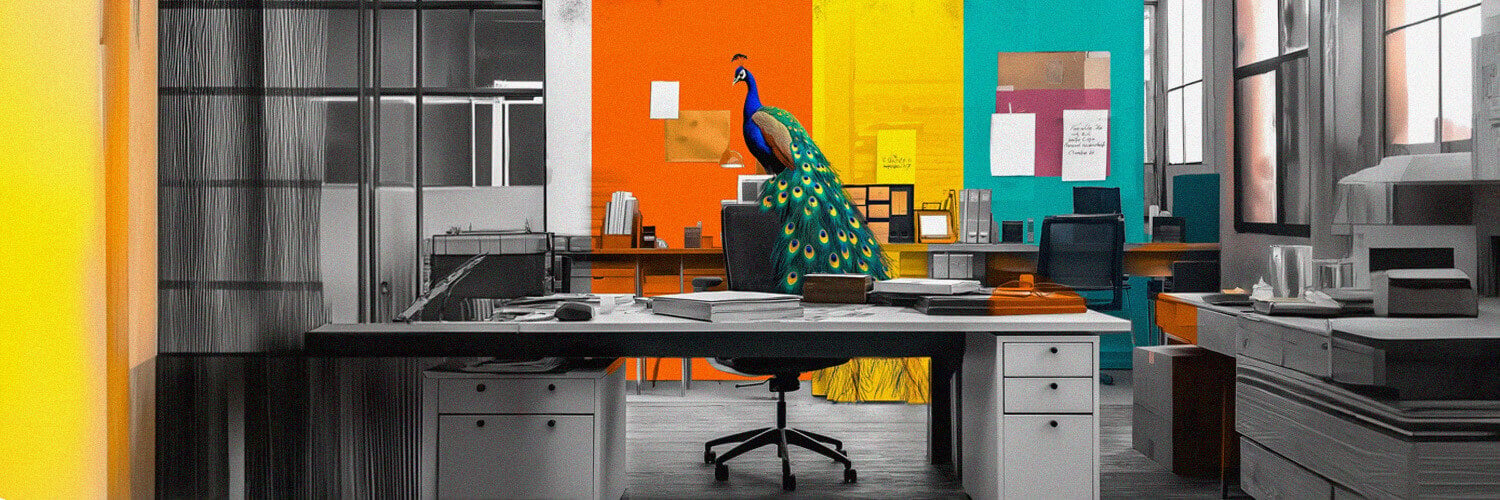If you can remember pre-pandemic times, you can also remember how nobody was actually scared of catching the flu, a common cold, or any other flu-like disease. You can remember large open space rooms where multiple (sometimes even tens of) people were working in the same room, or maybe you can remember getting sick during that period and not even worrying about it. Private office space was just for managers and directors, everyone else just got along in shared office space -- and although we dreamed of having privacy, we also didn't think our very health was endangered by sharing the same space with our colleagues.
Nowadays it is all different. Like with many other work-related matters, COVID-19 has changed how we view office space and privacy.
How can Facility Managers and Human Resources professionals adapt to the new normal and provide employees with their much-needed personal working environment?
Read on and find out more.
TL;DR:
- COVID-19 has drastically changed the way people view office space and privacy.
- An approximate 43% of employees now want at least partially private office space due to concerns for their health and safety.
- Private office space is no longer just a luxury reserved for top-level management.
- An office layout and working environment can have a significant impact on employee performance and wellbeing.
- Companies should be mindful of the kind of environment they should create to attract and retain employees while also making sure their private offices are not too private.
Private Office Space Versus Shared Office Space
For many years, the only place you could get some privacy while working was your own home. Home-based workers were lucky to have some space all for themselves, even if it wasn't too big. At least they weren't sharing their personal space with anyone else, right?
Not only was private space a luxury dedicated to top-level management, but open spaces were sought after by many employees and companies alike. As mentioned in our intro, things have changed. But before we dive into the "technicalities" of how and why they changed (as well as how you can adapt), let's make sure we define our "terms" correctly.
What Is a Private Office Space?
A private office space is a dedicated office for a single person. It could be a closed-door room or simply a cubicle with a door that can be locked to ensure privacy and personal working space, although the latter is usually not as effective as it lacks sound-proofing capabilities.
What Is a Shared Office Space?
A shared office space is a room (or section of a larger room) that is used by two or more people. Depending on the company's policies and/or employees' requests, integrated soundproofing may vary from mediocre to very effective.
Is an Open Office Plan Better Than a Private Office Layout?
Open space plans used to be very popular before the pandemic. Truth be told, they showed quite a lot of benefits, including increased flexibility, ease of maintenance, and management, and the fact that it was a cost-effective use of space. However, the downside was that employees' privacy was compromised by sharing office space with colleagues. Nowadays, not only have these disadvantages become more apparent to company owners and workers alike, but other factors have also come into play.
The biggest impact came from COVID-19, which dramatically increased the demand for private office space, because of its known health hazards. According to research, an approximate 43% of employees now want at least partially (if not totally) private office space. Not only did employees become more wary of the dangers of sharing a common space with a lot of people (particularly during a pandemic), but in many states and countries around the world, the legislation changed to accommodate the "new normal".
So should you go ahead and create a more personal working environment or not? The answer is yes, but there are other factors to consider as well.
Office Layout and Working Environment
It is no secret that the right office layout and working environment can definitely affect employee performance. A well designed office enables people to be more productive, work better in collaboration with each other, and be more creative (all while maintaining their mental health and wellbeing).
Let's take a closer look at what kind of work environment is most beneficial for businesses and employees alike.
What Is a Working Environment?
A working environment can be defined as the physical space in which certain work-related activities are performed. It includes not only private office spaces, but all the elements that together create a set of conditions that enable people to work more effectively. These factors can include lighting, temperature control, air quality, room design and ergonomics, among many others.
What Employees Expect From Their Working Environment?
There is a very clear correlation between employee productivity and their working environment. What do employees expect from their work environment, though, and what is the link between this and private office space?
Well, before the pandemic, most employees wanted a work environment that would be distraction-free so they could focus on their work. Furthermore, office design that stimulates creativity and enables everyone to work in a hassle-free way were both popular requests.
When the pandemic hit, however, private office space suddenly became more than something "very nice to have". It became essential to employee health. As such, private office space became an imperative for private working arrangements.
As private offices and personal working spaces become more popular, companies should be mindful of the kind of environment they should create to attract and retain employees while also making sure their private offices are not too private! This is because it can lead to social isolation, which affects collaboration.
How Can an Office Layout Shape the Working Environment?
Most private offices are designed to reflect either one person (individual private office) or a small group of employees (private office space shared by two to three people).
However, private office space can also be designed to shape a certain kind of working environment. This is done using one or more techniques, such as:
Creating private offices with glass walls to provide natural light and a sense of openness
Creating private offices that enable employees to see into common areas without compromising their privacy (by way of partitions or glass walls)
Pairing private offices with gathering spaces or breakout rooms, to promote collaboration and teamwork.
In the end, it all depends on what kind of working environment you want to create. However, private office space should never be a substitute for genuine engagement, consideration and respect towards your employees. After all, private offices are not private in isolation. They are private to enable people to work better together, without fear of viruses or lack of privacy.
Employees Are Seeking More Private Working Environments
As mentioned before, private work environments never went out of "fashion" per se. Even in the best work environment, surrounded by your favorite people to work with, open spaces could still be considered intrusive (at least every now and again).
With a virus that spreads rapidly in closed spaces, it is easy to see why more and more employees would prefer more private working environments.
Personal Space at Work
Having personal space (both physically and psychologically) is important -- not just at work, but in your personal life as well. Who hasn't been in a situation that made them feel uncomfortable? Having someone look over your shoulder or feeling like you are constantly "followed" in how you work is definitely not helpful for productivity, from any perspective.
In any case, private office space isn't going anywhere. In fact it's only going to keep growing in demand as people become more and more concerned about their work environment and private working arrangements.
Post-Pandemic Arguments for More Private Spaces
If, before the pandemic, private office space was more of an "optional" matter, COVID-19 made us all reconsider our positions on how the ideal work environment should look like.
Health and Safety in the Workplace
Both health and safety are important in the workplace, and private office space is an essential tool for achieving these objectives, particularly in a context where viruses are easier to transmit from one person to another in shared, closed spaces. While private offices were always available, there was never a "necessity" to work in private until the pandemic hit us all by surprise.
Even when COVID-19 will not be a threat anymore, private office space will remain one of the most sought-after work environments.
How come?
While private office space is often seen as a private matter between employers and employees, it also says something about the company. It indicates an open and supportive work environment (because private working arrangements imply trust and teamwork). It shows that the company cares about the private working arrangements of its employees, even if it's just for their own sake.
While private office space isn't a "one-size-fits-all" kind of work environment, you can still create your own private space to manage certain tasks or projects. This enables you, as a Facility Manager or HR professional, to get the "best" of both worlds: provide teams with open office space for collaborative projects, as well as private space for those times when individual work takes charge.
Work From Home Experience
Although working from home is an entirely different type of work environment, it is very important to mention that, after working remotely for nearly two years, most employees will find returning to noisy, potentially unhealthy, and unproductive open spaces.
The WFH experience has changed people's perspective of how their work environment should look like -- and private office space will definitely be an important criterion to help everyone determine how and when they return to office. Along with a hybrid work model, personal space will definitely play a huge role in building the "new normal".
How Do I Create a More Private Office in an Open Space?
The open office plan made sense from every point of view. It was space-savvy, cost-savvy, and collaboration-friendly. Minus the parts where people often felt like they don't have any personal space at work, the open office worked.
The good news is that you don't have to build up walls and return to old-school cubicles.
Here are some things you can do:
Understand the Essentials of Your Private Workspace
First and foremost, identify what you need in your workspace to perform effectively. This varies from person to person; some may require dual monitors for multitasking, while others might prioritize a spacious desk for spreading out documents. Reflect on these essentials, as they will dictate the layout and equipment of your private working space.
Implement Physical Dividers
One of the most straightforward methods to carve out a private work space in an open environment is using physical dividers. These come in various forms:
- Bookshelves: Besides acting as dividers, they offer storage and display options.
- Plants: Larger indoor plants can create a natural barrier that enhances air quality.
- Acoustic Panels/Dividers: Specifically designed for noise reduction, these can significantly minimize auditory distractions.
Enhance Privacy Through Lighting and Sound
Lighting plays a crucial role in dividing spaces and creating the intended ambiance for your private working area. A strategically placed lamp or ambient light can visually delineate your workspace without harsh physical barriers.
For sound privacy, consider noise-canceling headphones or white noise machines. These tools are invaluable in maintaining focus and keeping external conversations or noises at bay.
Switch to the Hybrid Work Model
Instead of having people work in private all the time (and risk losing them to distractions or low productivity), encourage them to work both at home and at the office. That way, private working arrangements will not be an exclusive luxury anymore.
Adjust Your Office to Activity-Based Working
Although private office space clearly has its advantages, it's not the only solution to private work arrangements. The idea of activity-based working is that private spaces are created around individuals' tasks or projects. This way, private spaces are flexible and can be adjusted at any time depending on people's individual needs.
Create different types of private office space, such as "modern cubicles" or "meeting rooms", depending on the task at hand.
This way, private working arrangements will no longer be an expensive privilege that some employees enjoy while others don't. Instead, private work spaces can become a new standard for private working arrangements.
Adopt Work Planning and Workplace Scheduling Technology
Companies offering flexible work models (like the hybrid work model) as part of their benefits packages are among the most sought-after options, particularly since the pandemic started. It makes all the sense in the world that employees flock towards businesses that enable them to work wherever they feel best: in the office or remotely.
If you want to make hybrid work for your business, do consider adopting planning and workplace scheduling technology solutions such as Yarooms Workplace Experience Platform. Doing this will help you schedule private and private work spaces, as well as create an accurate plan for office hours. Furthermore, this kind of software can also provide you with accurate workplace analytics that help you take better business decisions for the future.
Diverse Private Office Options to Match Your Needs
Solutions for Individuals, Small & Large Teams
The era of one-size-fits-all solutions in workspace design is long behind us. Today, private office spaces are as diverse as the individuals and teams they serve. For solo entrepreneurs or freelancers, a compact yet well-equipped space might suffice—providing the essentials like high-speed internet access, ergonomic furniture, and sufficient lighting without sacrificing comfort or functionality.
On the other hand, startups and growing businesses require spaces that can adapt to their evolving needs. A larger team might benefit from modular offices that offer the flexibility to expand or reconfigure layouts as necessary. In these environments, communal areas such as meeting rooms or break-out lounges become invaluable assets fostering collaboration and innovation among team members.
Furthermore, large corporations venturing into satellite offices or looking for agility within their real estate portfolios have sparked demand for customizable private office suites. These accommodate staff and can reflect corporate identity through bespoke design elements—tying back to brand ethos while maintaining a distinct sense of place.
Customization and Amenities Offered
The hallmark of an effective private office isn't just its capacity to house people; it's how well it aligns with user needs through customization and amenities offered. It starts with functional basics:
- Adjustable desks allow transitions between sitting and standing.
- Ergonomic chairs that support prolonged work sessions.
- Ample natural light paired with LED fixtures for varied times of day.
However, catering beyond ergonomics to personal well-being is where true transformation happens. Provisions such as quiet zones for deep focus tasks mingle with lively shared spaces encouraging interaction—a blend promoting mental health alongside professional performance.
Office amenities extend further into fitness centers on-site or agreements with local gyms; green spaces either indoors through biophilic design principles or accessible outdoor areas contributing positively to cognitive function; cafeterias offering nutritious food options supporting energy levels throughout the day—all take precedence in curating environments conducive to top-tier work outputs.
Wrapping Up
The fact that employees are requesting more private office space shouldn’t scare you. On the contrary: take this as an opportunity to make your team’s life better from every point of view, all without having to tear down walls and build new office space. As we’ve shown in this article, more private space in an office can bring amazing benefits – and it’s actually much easier to achieve than what it might appear at first (and yes, hybrid work is part of the solution).
How about you? Have you noticed more employees requesting more personal space in the office? And, if so, what are some of the measures you have implemented in this direction?












